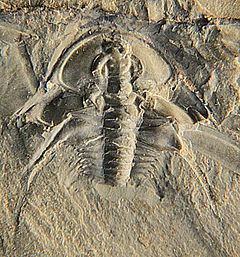Scientific name Bristolia Rank Genus | Class Trilobita | |
 | ||
Similar Olenellus, Olenellidae, Peachella, Wanneria, Mesonacis | ||
Tour por la safe bristolia
Bristolia is an extinct genus of trilobite, fossil marine arthropods, with eight or more small to average size species. It is common in and limited to the Lower Cambrian (Upper Olenellus-zone) shelf deposits across the southwestern US, which constitutes part of the former paleocontinent of Laurentia.
Contents
- Tour por la safe bristolia
- Safe bristolia pulled away from the north everest for bad weather
- Taxonomy
- Relations with other Olenellina
- Species previously assigned to Bristolia
- Etymology
- Description
- Distribution
- Habitat
- References
Safe bristolia pulled away from the north everest for bad weather
Taxonomy
Bristolia can be separated into two distinct groups: one consisting of B. insolens and B. anteros, the other comprising a gradual spectrum of morphologies including B. mohavensis, B. harringtoni, and B. bristolensis morphotypes. The second group reveals a dynamic morphological trend. From the oldest species B. mohavensis, the lineage undergoes gradational increase in intergenal angle and advancement of the genal spines, progressing through B. harringtoni, culminating in B. bristolensis. Younger specimens show a trend back to more acute intergenal angles and less advanced genal spines typical of B. fragilis. This development reflects an initial deepening of the water, followed by a reversal to increasingly shallower water. Bristolia insolens represents an extreme extrapolation of the earlier trend and is restricted to a narrow stratigraphic interval at maximal flooding.
Relations with other Olenellina
Bristolia is most related to Fremontella halli and slightly further removed from Lochmanolenellus mexicana. These three genera together comprise the subfamily Bristoliinae. The sister group Biceratopsinae can be distinguished by their strongly effaced cephalic features. Basic to both these subfamilies are the two species of the genus Laudonia. In Laudonia the anterior cephalic border is developed as a flattened ledge, not as an elevated ridge as in the Bristolinae. Also the furrow (S3) between the front lobe (L4) and the bordering side lobes (L3) is deepest at midline, while in the Bristolinae the depth is the same in the middle as to the sides. Fremontella, Lochmanolenellus and Laudonia have shorter genal spines (comparable to 4-5 thorax segments) than Bristolia (8 segments). Lochmanolenellus and Laudonia both have intergenal spines, while Bristolia and Fremontella lack intergenal spines in adults.
Species previously assigned to Bristolia
Etymology
The genus Bristolia is derived from the species name of Mesonacis bristolensis, that was elevated to a separate genus. The names of the species have the following derivations.
Description
As with most early trilobites, Bristolia has an almost flat exoskeleton, that is only thinly calcified, and has crescent-shaped eye ridges. As part of the Olenellina suborder, Bristolia lacks dorsal sutures. Like all other members of the Olenelloidea superfamily, the eye-ridges spring from the back of the frontal lobe (L4) of the central area of the cephalon, that is called glabella. The headshield (or cephalon) of Bristolia carries conspicuous and curved spines (called genal spines) of approximately 8 thorax segments long (measured parallel to the midline). The genal spines are attached in front of the back of the headshield. The central raised portion that represents the axis in the cephalon (or glabella) touches the elevated ridge that borders the cephalon. The furrows that separate border, eye ridges, glabella and its lobes are distinct (unlike in the Biceratopsinae). The area outside of the axis (or pleural lobes) of the third segment of the thorax are greatly enlarged, and carrying large trailing spines. These extend further back than the rest of the body except for the axial spine that is carried by the most backward (15th) prothorax segment. The pleural lobes of the 1st, 2nd, 4th and 5th are consequently triangular in shape and edge forward and backward respectively, and do not carry spines. Prothorax segments further back carry slender spines that angle backwards. When the opistothorax is known it has at least 17 segments.
Distribution
Habitat
Bristolia was probably marine bottom dweller, like all Olenellina.
